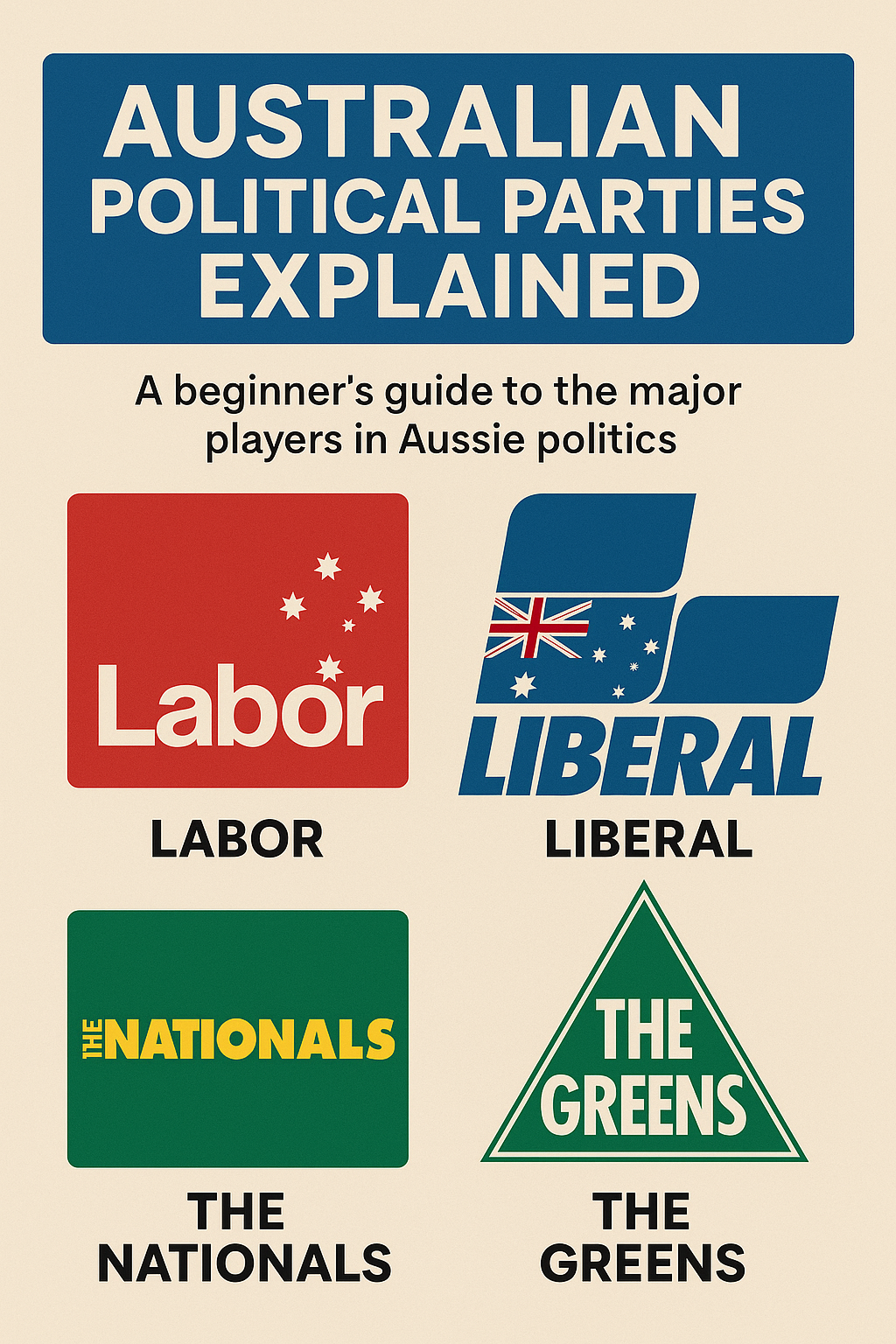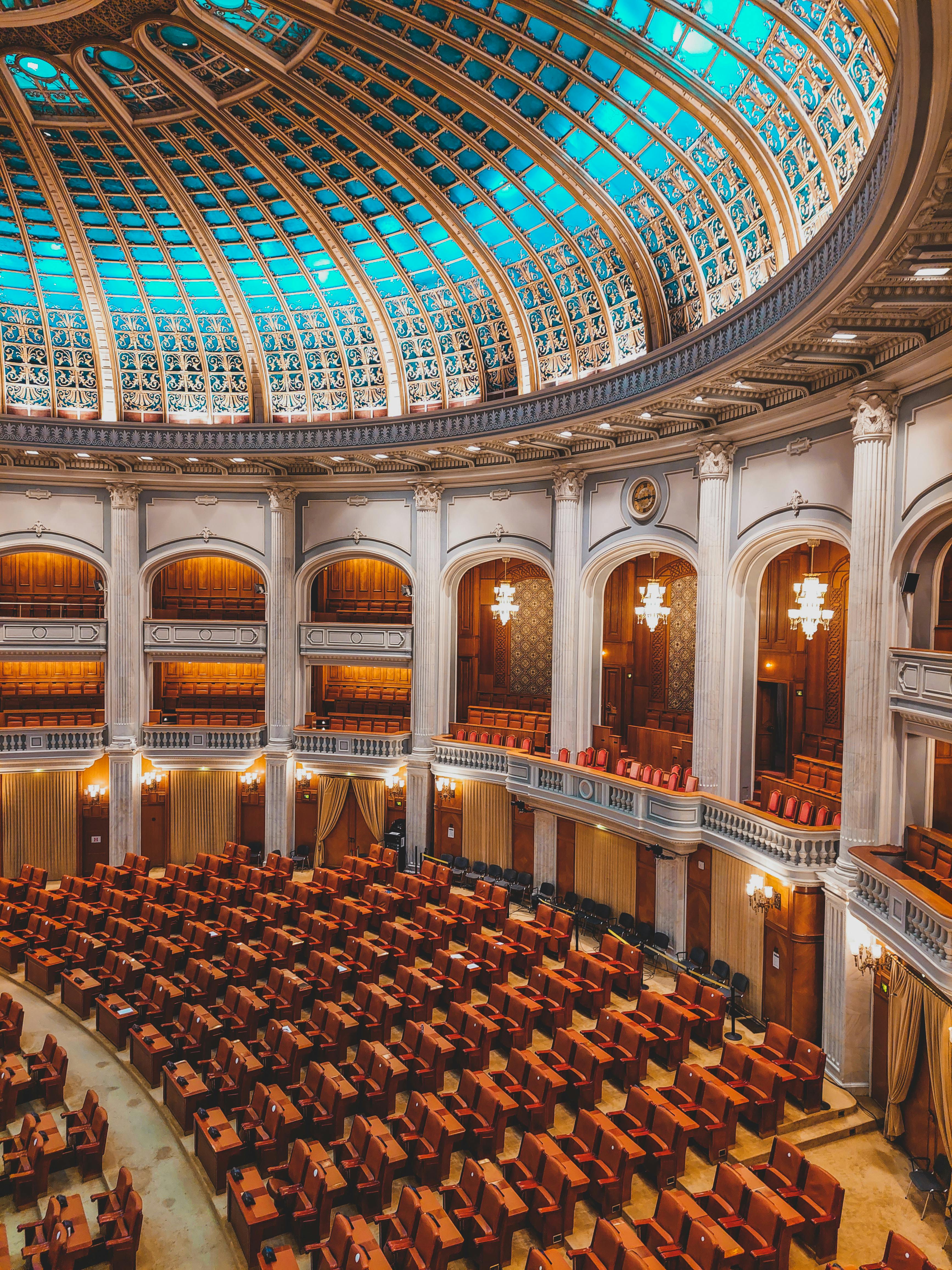Australian Political Parties Explained
A beginner's guide to the major players in Aussie politics: Labor, Liberal, The Nationals, and The Greens.

The Big Idea in 30 Seconds
- Two main parties: The Australian Labor Party and the Liberal Party of Australia (with its partner, the Nationals).
- Parliament-based system: The party or coalition with a majority forms the government. Their leader becomes the Prime Minister.
- Minor parties and independents: Smaller groups like the Greens and the United Australia Party influence big issues and laws.
- Voting is required: Australians must vote — and they rank candidates by preference.
How Australia's Political System Works
Australia is a democracy. That means people vote to choose who runs the country. But it doesn’t work exactly like in the U.S. or the U.K.
Australia has a Prime Minister, not a president. The Prime Minister is the head of government — kind of like the team captain of the winning side. The way that person gets their job is different than you might expect: voters don’t choose the Prime Minister directly. Instead, voters pick a local representative in their area (called an electorate). The party that wins the most seats in the House of Representatives gets to form the government. Then, the leader of that party becomes Prime Minister.
So, winning enough seats is everything — and that’s where political parties come in.
What Are Political Parties?
Political parties are groups of people who share ideas about how to run the country. Parties aim to get as many members elected as possible. If they win enough seats, they get to run the government.
There are major parties (the big names you see all the time on the news), and minor parties (smaller groups that focus on specific issues).
The Major Parties
1. The Australian Labor Party (ALP)
The Labor Party is one of Australia’s oldest and biggest political groups. It usually supports workers, public services, and stronger protections for employees and unions. They've traditionally stood for equality and government support in areas like schooling and healthcare.
In short: Labor sees government as a tool to level the playing field.
Today, Labor often appeals to younger voters, people in cities, and workers in public services — like teachers and nurses.
2. The Liberal Party of Australia (and the Coalition)
The Liberal Party is the other major force in Australian politics. Despite the name “liberal”, the party supports private business, individual freedom, and smaller government. They often prefer lower taxes and fewer regulations than Labor.
The Liberals don’t usually win elections alone. They team up with the National Party (which focuses on rural areas). Together, they’re known as the Liberal-National Coalition. This partnership helps them cover both cities and rural regions.
In simple terms: The Coalition leans more toward conservative values and market-driven solutions.

Minor Parties That Make Noise
Minor parties don’t often form government, but they can have big influence — especially in the Senate (Australia’s upper house), where smaller groups can block or support laws.
The Australian Greens
The Australian Greens are known for their strong environmental focus. They also campaign for Indigenous rights, social justice, and limiting the power of big companies. Think of them as the voice pushing for action on climate change, public transport, and fair treatment of all Australians.
United Australia Party (UAP)
This group was a recent player backed by businessman Clive Palmer. The United Australia Party made headlines with big ad campaigns and a focus on loosening government controls — especially around issues during the COVID-19 pandemic.
They don’t hold many seats, but they show how money and media can still get minor parties noticed.
Forming a Government: How the Math Works
Picture a high school sports tournament. The team with the most wins (or points) goes to the finals. Same idea here — but with seats in Parliament.
Australia’s House of Representatives has 151 seats. To form government, a party (or coalition) needs to win at least 76 seats. That’s the magic number. If no party gets there, it’s called a hung parliament — and minor parties or independents may get to decide who governs by picking a side to support.
The party or team that forms government gets to pick the Prime Minister — their leader becomes the official face of the federal government.

Other Names You Might Hear
Independents
Not everyone joins a party. Independent politicians run and win on their own. In recent years, many independents have made a splash by focusing on local issues or promising to take climate change seriously.
Teal Independents
This is a nickname for a group of centrist independents (often women) who run in wealthy city areas. Their name comes from the teal-colored signs they use. These candidates usually support climate action and government transparency. They often challenge the Liberal Party in urban areas.
Why It All Matters
Understanding Australian politics — and who Australia’s political parties really are — helps voters make informed decisions. The big names may get most of the power, but small parties and independents can push governments to take action they otherwise wouldn’t.
And while the voting system can seem complicated, it was built to reflect lots of voices — not just one winner-takes-all option.
Where to Learn More
Want to explore further? These books break it down in even more detail:
Find your place on the spectrum.
Now that you know the basics of the Australian parties, see where your own views align.
Take the Free Political Test